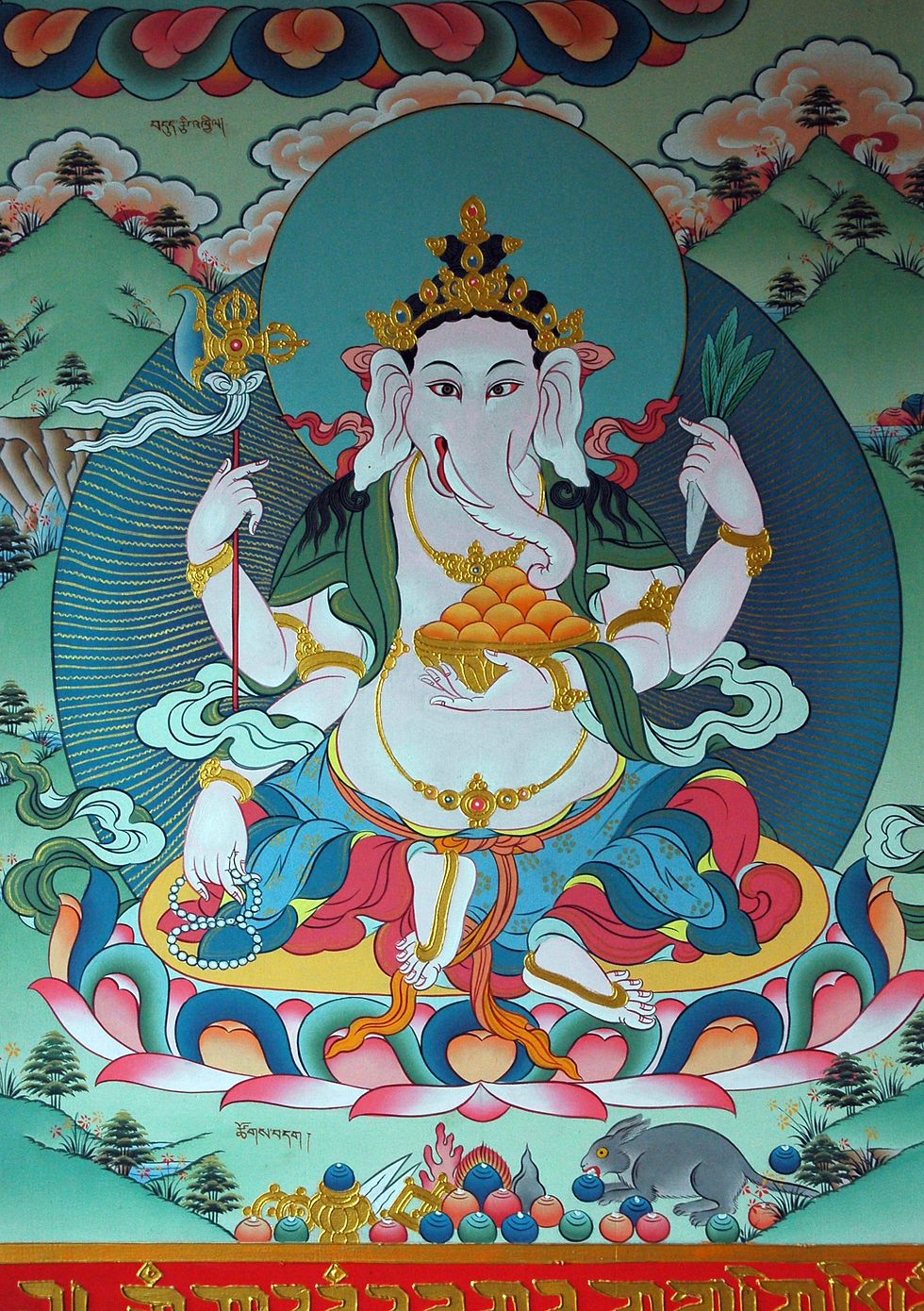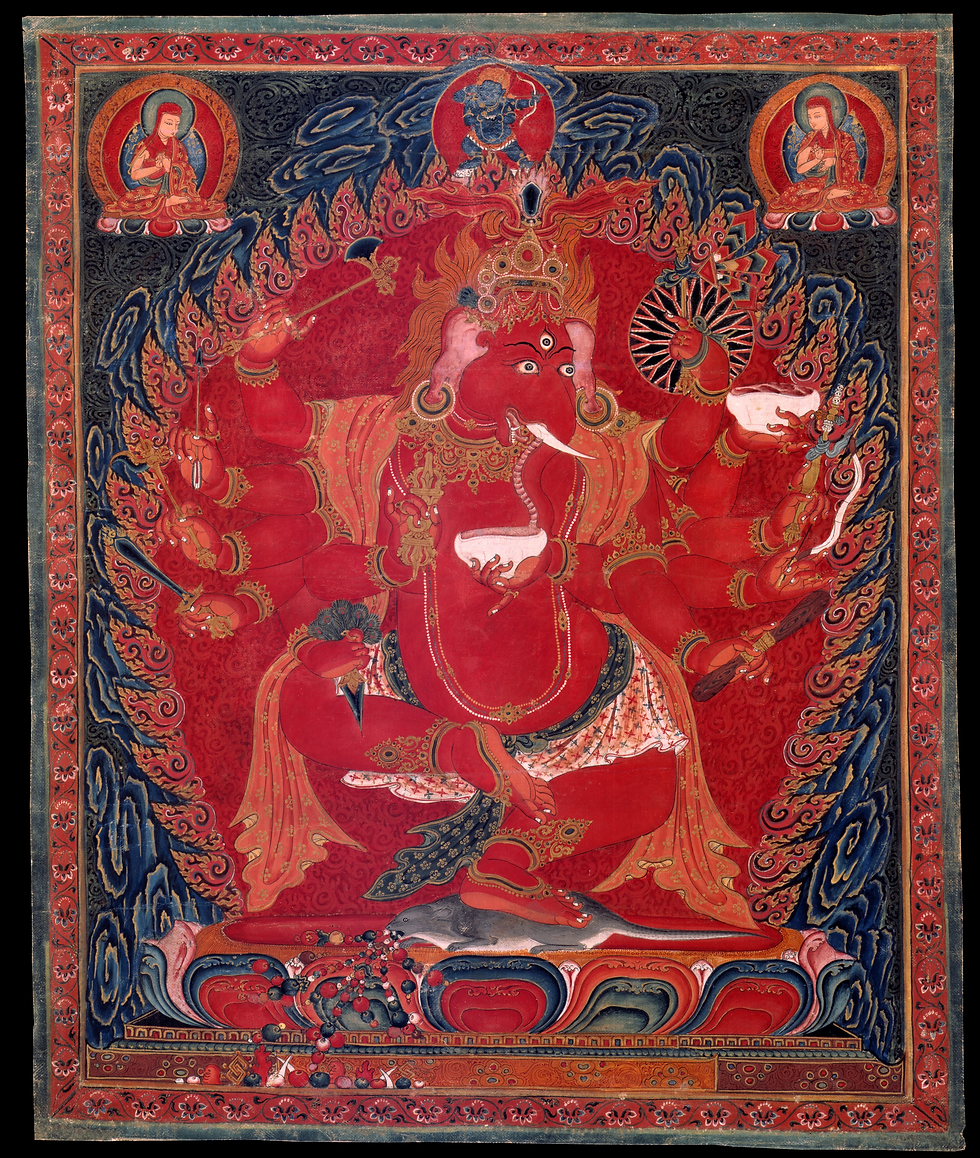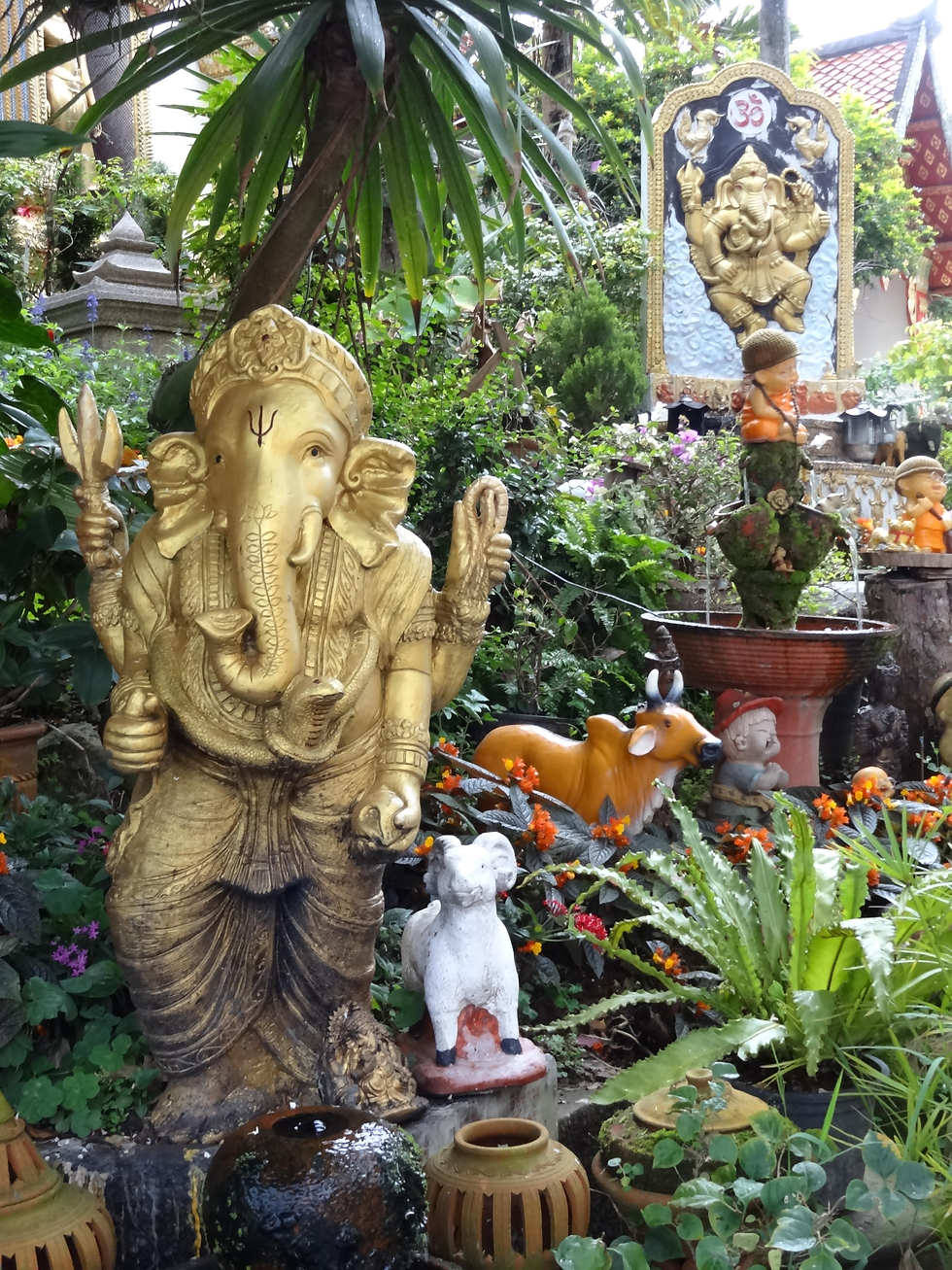International Representation of Lord Ganesha
- Prerana Thakur

- Jul 6, 2023
- 5 min read
Updated: Sep 27
Perhaps one of the most popular Hindu deities, Ganesha, is revered amongst elders and kids alike. Stories of Ganesha’s childhood, his peculiar elephant face, as well as his devotion to his parents, are familiar to followers of the Hindu religion. Popular culture has produced several animated movies, television serials, and cartoons following tales of Ganesha’s mischievous adventures with his vahana 'moushak'. In fact, Ganesh Chaturthi, which commemorates the arrival of Lord Ganesha, is celebrated with huge pomp and grandeur across India. However, India is not the only country where Lord Ganesha is worshipped. Other religions, especially Buddhists in China, Tibet, Japan, and Southeast Asia, have adopted Lord Ganesha into their culture too.
In different parts of Asia, different cultures revere Ganesha for his generosity, his ability to solve problems, his cosmic power, prosperity, and success. Below are a few countries, besides India, that have incorporated the worship of Lord Ganesha in their traditional practices and religious beliefs.
WORSHIP OF LORD GANESHA IN JAPAN
Locally referred to as Kantigen in Japan, this Buddhist god is believed to have been inspired by the Hindu deity of Lord Ganesha. Similar in appearance to Lord Ganesha, Kantigen has an elephant's face but a human body. He is known by several names, such as Binayaka-ten (similar to Vinayak), Shoten, Ganabachi (similar to Ganpati Bappa), and Aryaveda. Japanese Buddhists believe that Kantigen aids them in overcoming obstacles and removing hindrances from their path of life. This characteristic is very similar to Ganesha’s Vighnaharta avatar, which suggests that the Hindu deity removes and triumphs over all obstacles that come his way. In Japan, it is believed that Kantigen blesses his followers with wealth, prosperity, good health, and fortune. Moreover, he is known to be the destroyer of all evil, bringing peace, serenity, and good energy into the universe.

Not only can Kantigen’s origins be related to Buddhism, but also Tantrism. he is also believed to be a cult deity or a Tantric god in Japan. Tantric practitioners believe that Lord Kantigen is, in fact, Lord Ganesha, who was sourced from Hindu practices. During ancient times, when Buddhists travelled to India to visit stupas and other Buddhist monuments, they returned to their countries with knowledge of Indian gods and Hindu deities. One of them was Lord Ganesha, who was accepted into the Buddhist community as well as other cults and religions.
There are several temples and shrines in Japan dedicated to the worship of Kantigen. Some date back to 6 AD and contain wooden sculptures of the god sitting on a lotus. One might ask why Lord Ganesha is seated on a lotus, which is typically Saraswati’s abode in Hindu mythology. Conversely, in Buddhism, a lotus is a symbol of purity, ascribed to the gods, who are considered to be the purest beings. Lord Kantigen bears weapons in his hands, which he uses to deflect challenges and overcome hardships. Instead of baked modaks, which are believed to be Ganesha’s favourite, Kantigen loves radishes. In Japan, radishes are known as Daikon and are viewed as symbols of fertility, sexual union, and marriage. Thus, Kantigen is also responsible for ensuring smooth marital unions, harmonious relationships, and childbearing.

WORSHIP OF LORD GANESHA IN TIBET
Similar to Japan, Tibet is a region where Buddhism is widely practiced. However, unlike Japan, where it is difficult to trace the exact origin of Lord Kantigen, Nepalese Buddhists were introduced to Lord Ganesha by monks Atisa Dipankara Srijana and Gayadhara in the 11th century AD. These Buddhist monks travelled to India to visit various Buddhist heritage sites. On their journey, they encountered Hindus who worshipped Lord Ganesha. Intrigued by Lord Ganesh’s popularity in India, they translated texts and scriptures mentioning the deity into their language. These texts became popular amongst small Buddhist cults in Tibet. An avatar of Lord Ganesh, popularly referred to as Red Ganesha, is worshipped in Tibet and is considered to be a part of the Padma family.

Tibetan worshippers of Ganesha have propounded their own mythological stories connected to the origin of Lord Ganesha. During the 17th century, a Tibetan myth claimed that Shiva’s wife Ganga lost her son due to a curse placed upon her by Uma, Shiva’s other wife. To revive his dead son, Shiva placed the head of another animal, an elephant, on him. This mythical tale, allegedly born in the 17th-century Tibetan, is quite similar to the legends of Lord Ganesha in the Puranas.
Most importantly, a particular sect of Tibetan Buddhists also believes that Lord Ganesha was the founder of Lamaism. According to a legend, Lord Ganesha met Sakya Pandita’s brother and told him that his dynasty would rule Tibet. Sakya Pandita was a Sanskrit scholar and Tibetan spiritual leader who was responsible for the spread of Buddhism in Tibet.
WORSHIP OF LORD GANESHA IN THAILAND
Another country in Asia that has a huge population of Ganpati devotees is Thailand. Thailand has several temples dedicated to Lord Ganesha. In the local language, he is referred to as Phra Phikanet and is considered to be a deity who removes obstacles. This is similar to the significance of Lord Ganesha in Hindu mythology. The elephant-headed god is also worshipped in Thailand because he brings success, prosperity, and good fortune to his followers.
In Thailand, people usually pray to Lord Ganesha before they start a new business venture, establish a company, or go overseas to study or work. He ensures success in all endeavours and ensures that any hindrances in the way of a new business/venture are countered. This interpretation has also been derived from Hindu beliefs and cultural practices.
Apart from his religious importance in Thailand, Lord Ganesha is viewed as a being who loves arts, crafts, and creativity. The deity has a penchant for artistic and creative capabilities and, therefore, has been declared the logo of Thailand’s Department of Fine Arts.
Devotees in Thailand celebrate Ganesh Chaturthi at around the same time it is celebrated in India. Celebrations and religious rituals are held in the two biggest Hindu shrines in Thailand- the Shiva Temple in Bangkok and the Utthayan Ganesh Temple. Here, Buddhists partake in festival rituals too.

CONCLUSION
The worship of Lord Ganesha in Buddhist cultures can be explained by the deep history and interrelationship between Hinduism and Buddhism. Buddhism emerged in India at a time when Hinduism was at its peak. Therefore, many cultural practices and religious tenets of Hinduism were adopted into Buddhism. This has led to a similarity in deities, rituals, and beliefs. Lord Ganesha might be called by different names in different countries, but this is merely an indicator of his widespread popularity. As the Ganpati season nears, one must take time out to learn more about the significance of this deity in India as well as in countries abroad.

AUTHOR
Prerana Thakur
Pratha Content Writer








Comments